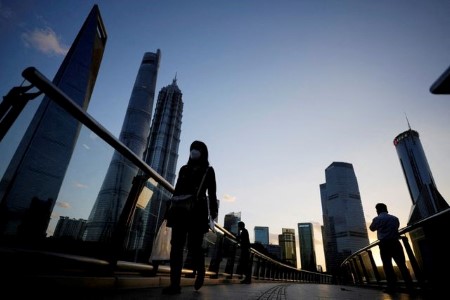




Philippines Trade Update: Trade trajectories trend along
 DOWNLOAD
DOWNLOAD

Policy Rate Updates: Double cut finale
 DOWNLOAD
DOWNLOAD

Monthly Economic Update: One for the road
 DOWNLOAD
DOWNLOAD


US disinflation good, Chinese disinflation bad

Softer-than-expected US inflation lit a fuse under investor risk appetite and asset prices on Wednesday which should fire up animal spirits across Asia on Thursday, although a hawkish tilt in the Fed’s new economic projections could put a lid on things.
The Fed’s revised outlook – fewer rate cuts this year, slightly higher unemployment, a higher long-term policy rate – cooled equity, FX, and fixed income markets late in the US session on Wednesday. Quite significantly, in the end.
But it was not enough to puncture the US ‘soft landing’ narrative and the market impact was clear – record highs for the S&P 500, Nasdaq and world stocks, and declines in US bond yields, the dollar, and cross-asset volatility.
That is a friendly mix of market conditions and sentiment for investors in Asia and across emerging markets on Thursday. Not for the first time recently, however, the dark cloud in an otherwise blue sky appears to be China.
Cooling price pressures may be welcome in the US economy and most economies around the world, but not in China, which remains blighted by the threat of deflation, tepid consumer demand, an imploding property sector, and fragile growth.
Figures on Wednesday showed that disinflationary pressures in China and even outright deflation persist, intensifying the pressure on Beijing to come in with heavy fiscal or monetary stimulus. Or both.
The cumulative effect on Chinese assets recently is notable – stocks and the yuan have tumbled, prompting state-owned banks to sell dollars to shore up the currency and reviving doubts about China as an investment destination.
Chinese stocks have lost 5% in the last three weeks, twice as much as the MSCI Asia ex-Japan index, and significantly under-performing Japan’s Nikkei, which has basically flatlined, and US and global stocks, which have risen to new peaks.
The yuan hit a seven-month low on Tuesday but rallied strongly on Wednesday. Perhaps it – and other currencies in Asia – will take advantage of the dollar’s weakness on Thursday.
On the other hand, the European Commission’s decision to impose extra duties of up to 38.1% on imported Chinese electric cars from July, will escalate investors’ concerns over trade wars between China and the West.
Beijing will likely retaliate, but how?
The Asia & Pacific economic calendar on Thursday is light, with a central bank policy decision in Taiwan and Australian unemployment figures the main releases.
Taiwan’s central bank is expected to hold its benchmark discount rate at 2.00% on Thursday and keep it there until late next year as it deals with persistent concerns over inflation.
Australia’s unemployment rate, meanwhile, is seen easing back to 4.1% from 4.0%, and job growth is seen slowing to 30,000 from 38,500.
Here are key developments that could provide more direction to markets on Thursday:
– Taiwan interest rate decision
– Australia unemployment (May)
– Thailand consumer confidence (May)
(Reporting by Jamie McGeever; Editing by Josie Kao)
This article originally appeared on reuters.com





 By Reuters
By Reuters